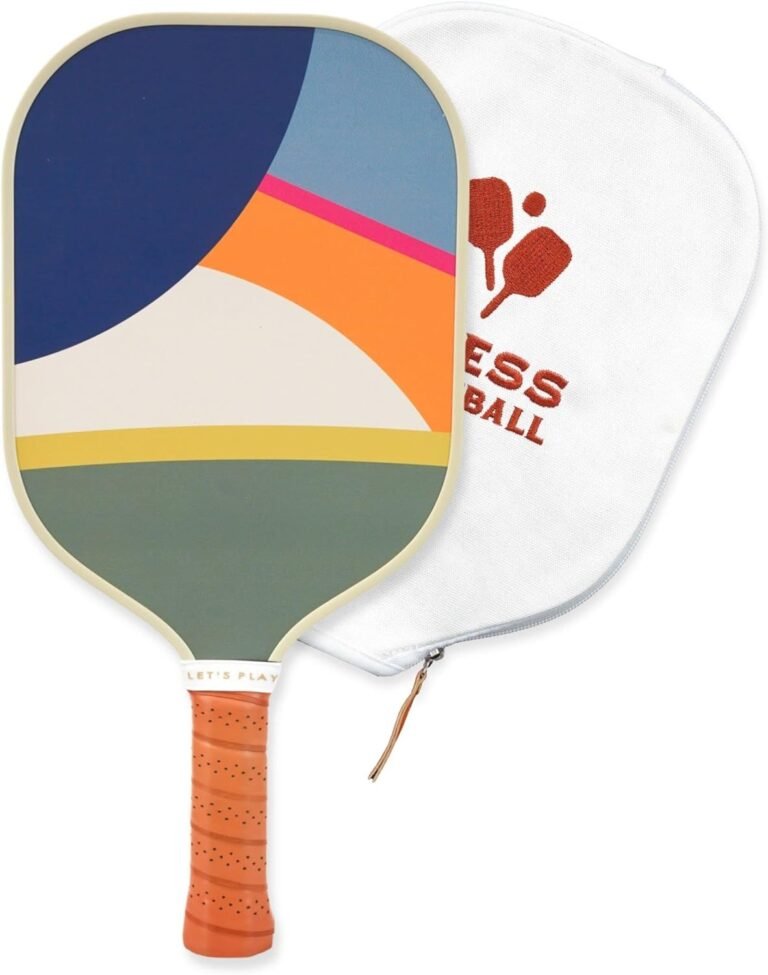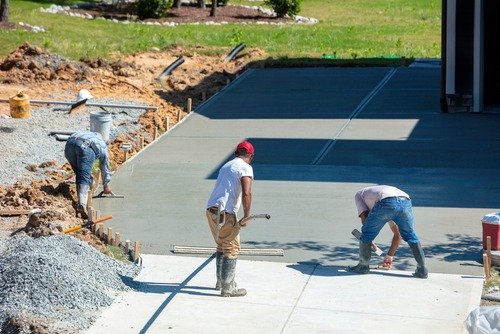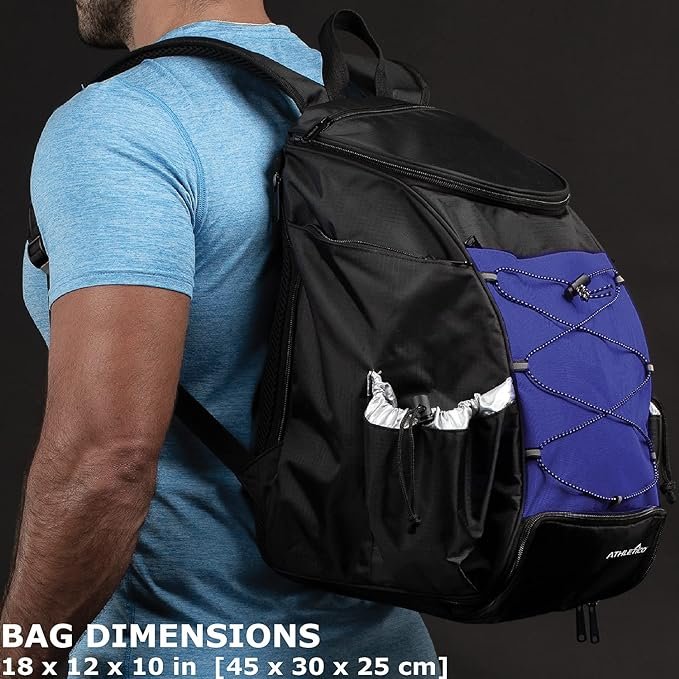Pickleball Court Dimensions: Everything You Need to Know
In recent years, pickleball has emerged as one of the fastest-growing sports worldwide. Combining elements from tennis, badminton, and ping pong, this paddle sport has captivated players of all ages and skill levels. The game’s unique blend of strategy, agility, and friendly competition has increased interest among sports enthusiasts. This article will cover the pickleball court dimensions to create your own game at home.
Pickleball Popularity
Pickleball is a paddle sport played on a court with dimensions similar to a badminton court. It originated in the mid-1960s as a backyard game but quickly gained traction due to its simplicity and accessibility. Players use solid paddles of wood or composite materials to hit a perforated plastic ball over a net.
The objective is to outmaneuver opponents by strategically placing shots while adhering to specific rules. Several factors have contributed to pickleball’s growth in popularity.
First, its rules are easy to understand for beginners, making it an appealing choice for recreational players just starting their athletic journey. The sport’s inclusive nature allows individuals with varying physical abilities to participate harmoniously.
Furthermore, pickleball’s social aspect contributes significantly to its rising fame. It promotes community engagement through organized leagues, tournaments, and lively gatherings where players can connect with others who share their passion for the game.
Pickleball Court Dimensions
An essential aspect that players and enthusiasts must grasp is the significance of understanding pickleball court dimensions. Comprehensive knowledge about these dimensions ensures fair play and enables participants to develop effective strategies that take advantage of the court’s layout.
Understanding the size specifications allows players to position themselves optimally and assist in a shot selection based on available space on the court. Recognizing the boundaries helps players make accurate decisions when returning shots, serving, or playing defensively.
This knowledge becomes crucial during competitive matches where precision and strategy can make all the difference between victory and defeat. Moreover, for enthusiasts who may be watching or analyzing pickleball games, understanding court dimensions allows for a more profound appreciation of the skills and tactics employed by players.
It provides a framework through which individuals can decipher the nuances of each shot and movement about the court’s boundaries. As we delve further into this article, we will explore pickleball court dimensions to equip players and enthusiasts with a comprehensive understanding of the game’s playing area.
Pickleball Court Dimensions
Standard court size
The official pickleball court dimensions measure 20 feet in width and 44 feet in length. These dimensions provide players ample space to engage in exciting rallies while ensuring fairness and competitive gameplay. By adhering to the established court size, players can maintain a level playing field and showcase their skills within the defined boundaries.
Court layout and markings
Pickleball courts are marked with various lines and zones to facilitate organized gameplay and ensure adherence to the rules. The baseline runs parallel to the net at each end of the court, defining the boundary where players serve. Sidelines extend from each side of the baseline to create a clear distinction for shots played within the court’s lateral limits. Moreover, a centerline divides the entire area vertically into two halves, serving as a reference point during gameplay.
Non-volley zone (kitchen)
An integral aspect of pickleball court dimensions is the non-volley zone, also known as “the kitchen.” This area is located adjacent to the net on both sides of the court and extends seven feet from it. The purpose of this zone is to prevent players from hitting volleys (striking the ball before it bounces) too close to or directly at the net. By creating this restricted area near the net, pickleball ensures a fair game by minimizing potential hazards from aggressive net play while encouraging strategic shot placement.
Service areas
Pickleball employs specific service areas that are fundamental for initiating each rally. The earlier centerline divides These areas into two halves, extending from the non-volley zone to the baseline. Each player must serve from within their designated service area diagonally across the net. The service areas provide a fair opportunity for servers to start the point and allow receivers to anticipate and position themselves accordingly.
Accurate serving placement within these areas is crucial, as it can dictate gameplay flow and pressure opponents right from the start of each rally. By understanding and adhering to pickleball court dimensions, players can engage in competitive matches with precise shot placement, strategic positioning, and effective utilization of different areas on the court.
These pickleball court dimensions encompass the physical size and crucial markings that ensure uniformity in gameplay across various courts worldwide. Mastering these dimensions is essential for beginners and seasoned players seeking an exhilarating pickleball experience.
Conclusion
Understanding the pickleball court size dimensions and space requirements for a pickleball court is essential for anyone looking to design, construct, or simply learn more about the sport. The standard court size of 20 feet by 44 feet, with a net height adjusted for the game, ensures a uniform playing experience across different venues, whether it’s competitive tournaments or casual backyard games.
Furthermore, considering the additional space around the court for safe play highlights the importance of planning and space management in pickleball court construction. By adhering to these guidelines, players can enjoy a safe, enjoyable, and competitive environment that respects the sport’s official standards.
FAQs (Frequently Asked Questions)
Q: What are the pickleball court dimensions?
A standard pickleball court measures 20 feet in width and 44 feet in length, including lines. These dimensions are identical to those of a doubles badminton court. The net height is 36 inches at the sidelines and 34 inches in the middle. The service courts are 15 feet from the baseline to the non-volley line (also known as the kitchen line), and the court is divided into two equal parts by the net, creating a playing area of 880 square feet.
Q: How small can you make a pickleball court?
While the official dimensions for a pickleball court are 20×44 feet, you can adjust the size slightly for backyard play or if space is limited. However, it’s important to maintain a proportional reduction to preserve the gameplay dynamics. A minimally reduced court might measure 18×40 feet, allowing for slightly less room for player movement but still enabling a fun game. For official play, though, adherence to the standard dimensions is required.
Q: How much room do you need around a pickleball court?
For comfortable play and safety, it is recommended to have a minimum of 10 feet of clearance around all sides of the pickleball court. This space allows for players to reach overhit balls without the risk of injury. For competitive or tournament play, a clearance of 12 to 15 feet around the entire court is preferred to accommodate a wider range of motion and ensure the safety of the players.
Q: How big of a concrete pad do I need for a pickleball court?
If you’re planning to construct a pickleball court on a concrete pad, the ideal pad size should be at least 30 feet wide and 54 feet long. This dimension includes the standard court size of 20×44 feet plus a minimum of 10 feet of clearance around the perimeter for safe play. For competitive settings or if space allows, expanding the clearance around the court to 12-15 feet on all sides, making the concrete pad 34-40 feet wide and 58-64 feet long, would be even better to accommodate a full range of motion and enhance player safety.






